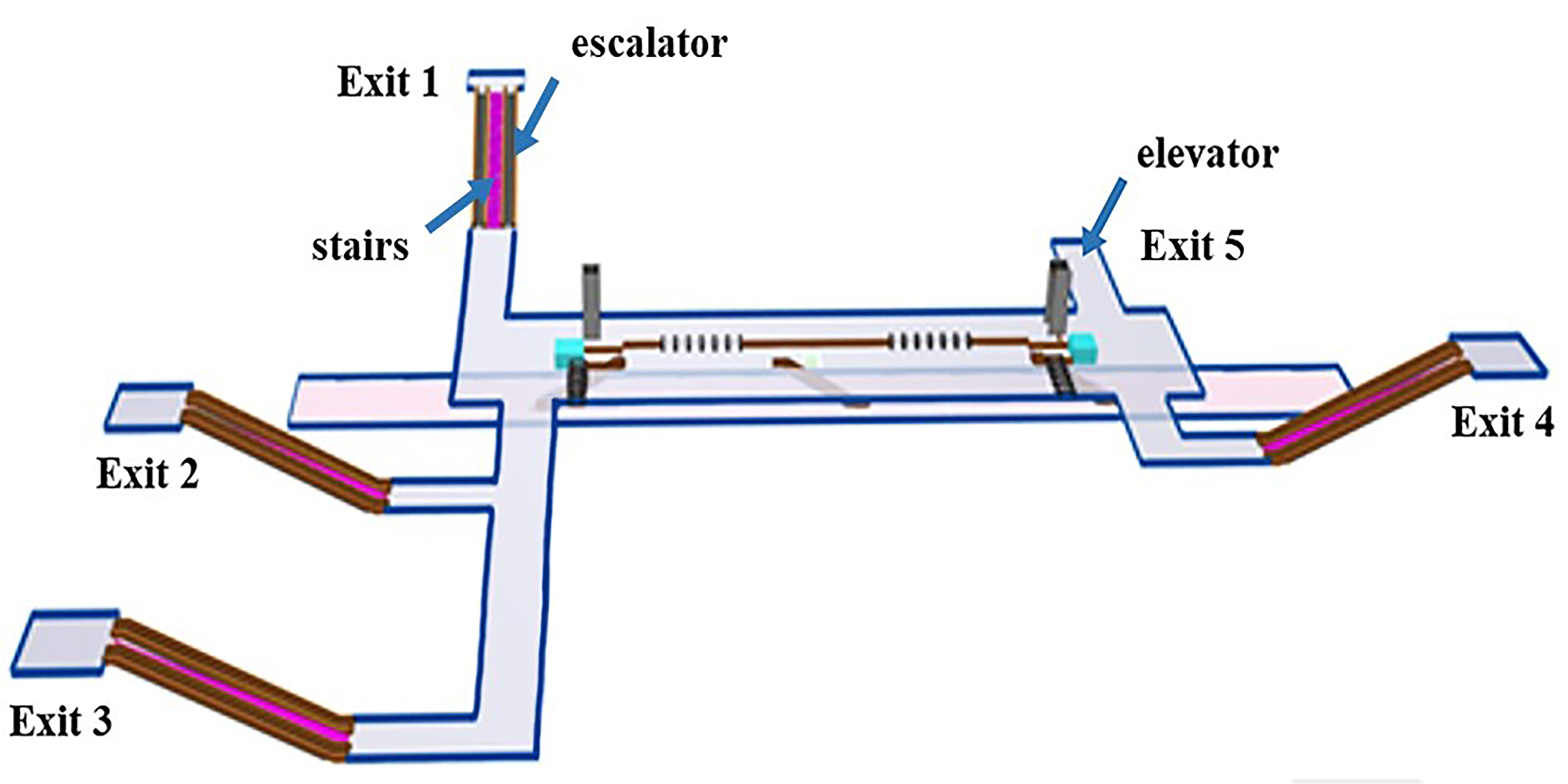Optimization of Evacuation Efficiency of Deeply Buried Subway Stations with Elevator Assistance
DOI:
https://doi.org/10.17815/CD.2024.169Keywords:
Deeply Buried Subway Station, Elevator, Travel Efficiency, OptimisationAbstract
Due to a variety of intricate topographic structures, many subway stations are constructed deeply. Traditional stairs and escalators in deeply buried subway stations can hardly meet passengers' demand for highly efficient travel. Buried depth of the subway station, passenger flow intensity, percentage of passengers choosing elevator, and elevator characteristics such as rated capacity and rated operating speed of the elevator are factors affecting the evacuation time of passengers. In order to study the impact of these factors on the evacuation efficiency under the daily commute of passengers, deeply buried subway evacuation model with an elevator exit was established by AnyLogic. Three kinds of simulation scenarios were analyzed. The results shows that average evacuation time is positively correlated with the buried depth of subway when the elevator is not set. When the passenger flow intensity is large, the higher the percentage of passengers choosing elevator, the longer average evacuation time of passengers. Compared to the simulation scenario with a rated capacity of 15 passengers and a rated operating speed of 1 m/s, average evacuation time can be reduced by up to 81.9% when the rated capacity and rated operating speed of the elevator are 40 passengers and 11 m/s respectively. The research can guide the subway planner reference on evacuation planning for the deeply buried subway station.
References
Shen, Y., Ma, J., Fang, H., Lo, S., Shi, C.: Deep reinforcement learning based train door adaptive control in metro tunnel evacuation optimization. Tunnelling and Underground Space Technology 128, 104636 (2022). doi:10.1016/J.TUST.2022.104636
Sawe, B.E.: Deepest metro stations in the world. URL https://www.worldatlas.com/articles/deepest-metro-stations-in-the-world.html. 2022,Jul,2022
Mossberg, A., Nilsson, D., Wahlqvist, J.: Evacuation elevators in an underground metro station: A virtual reality evacuation experiment. Fire Safety Journal 120, 103091 (2021)
Blake, S., Galea, E., Westang, H., Dixon, A.: An analysis of human behaviour during the wtc disaster of 9/11 based on published survivor accounts. 3rd International Symposium on Human Behaviour in Fire: Conference Proceedings pp. 181-192 (2004). URL http://gala.gre.ac.uk/id/eprint/810
Ma, J., Lo, S.M., Song, W.: Cellular automaton modeling approach for optimum ultra high-rise building evacuation design. Fire Safety Journal 54, 57-66 (2012). doi:10.1016/j.firesaf.2012.07.008
Koo, J., Kim, Y.S., Kim, B.I., Christensen, K.M.: A comparative study of evacuation strategies for people with disabilities in high-rise building evacuation. Expert Systems with Applications 40, 408-417 (2013). doi:10.1016/j.eswa.2012.07.017
Kinsey, M., Galea, E., Lawrence, P.: Human factors associated with the selection of lifts/elevators or stairs in emergency and normal usage conditions. Fire Technology 48, 3-26 (2012). doi:10.1007/s10694-010-0176-7

Downloads
Published
How to Cite
Issue
Section
Categories
License
Copyright (c) 2024 Shanshan He, Dandan Song, Juan Chen, Qiao Wang, Jian Ma

This work is licensed under a Creative Commons Attribution 4.0 International License.
Authors contributing to Collective Dynamics agree to publish their articles under the Creative Commons Attribution 4.0 license.
This license allows:
Share — copy and redistribute the material in any medium or format
Adapt — remix, transform, and build upon the material
for any purpose, even commercially.
The licensor cannot revoke these freedoms as long as you follow the license terms.
Authors retain copyright of their work. They are permitted and encouraged to post items submitted to Collective Dynamics on personal or institutional websites and repositories, prior to and after publication (while providing the bibliographic details of that publication).








